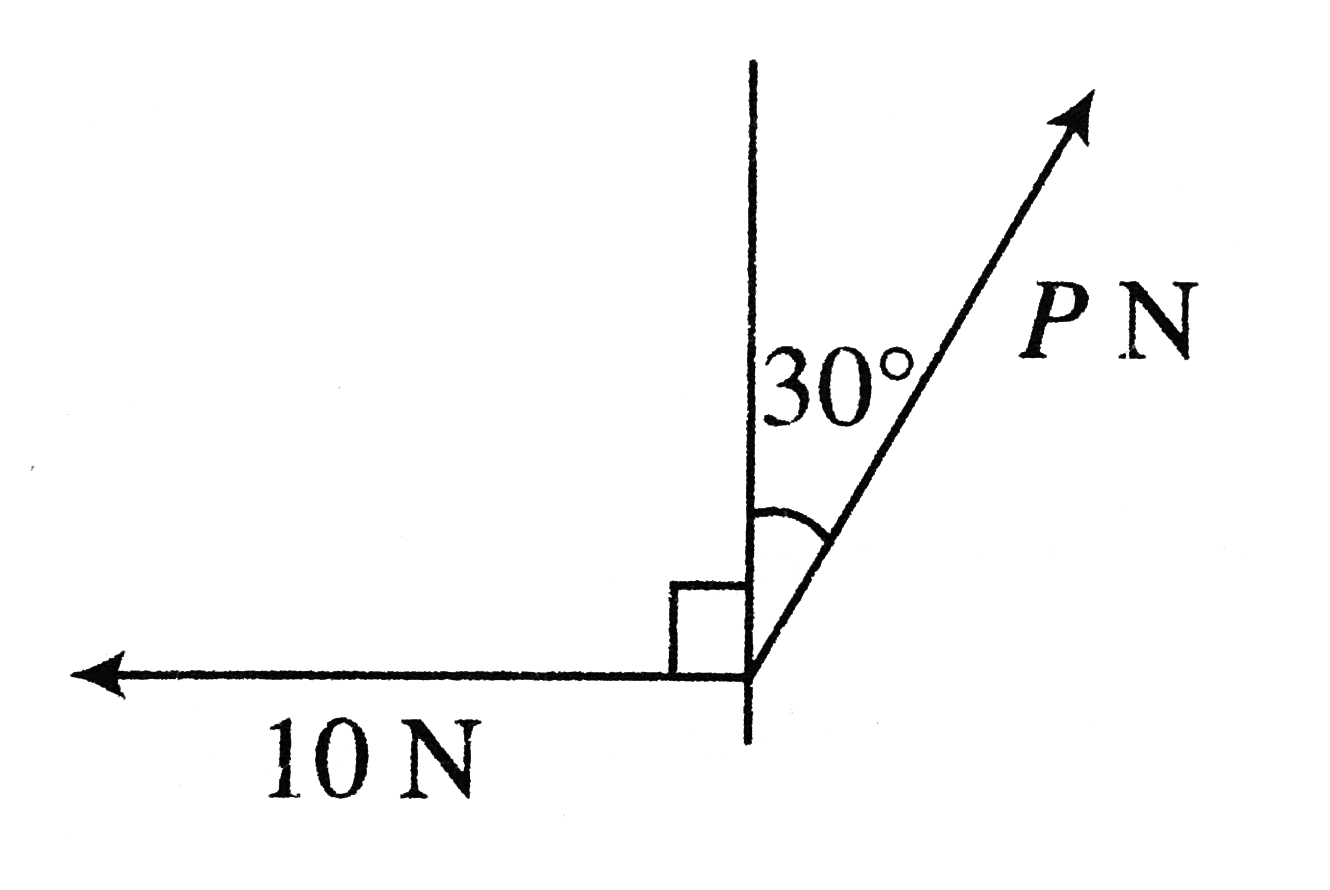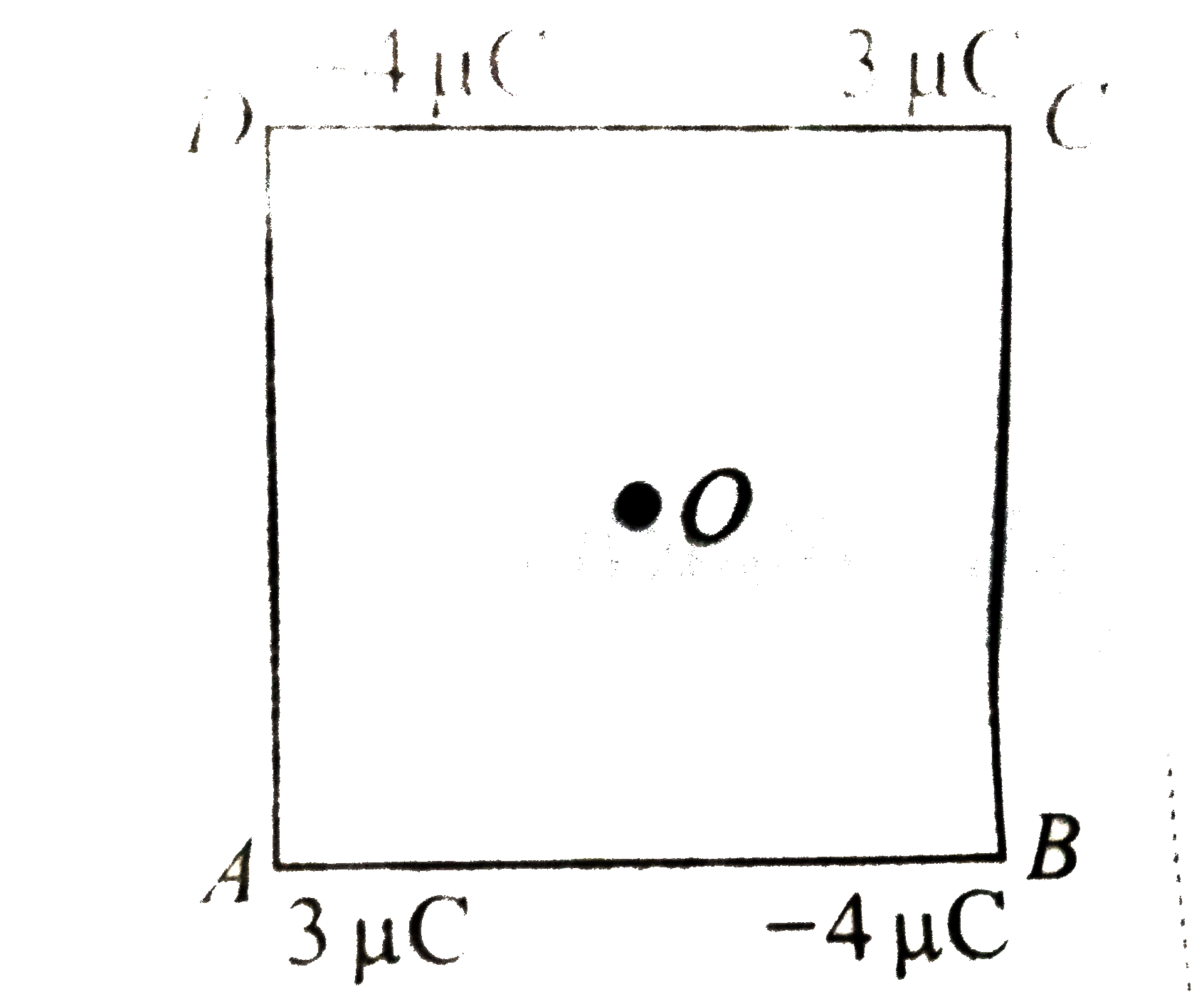An electric field of 105N/C points due west at a certain spot. What are the magnitude and direction of the force that acts on a charge of +2μCand−5μC at this spot?
To solve the problem, we need to find the force acting on two different charges in an electric field. The electric field is given as E=105N/C pointing due west. We will calculate the force for both a +2μC charge and a −5μC charge.
1. Identify the electric field and its direction:
The electric field E is given as 105N/C and points due west.
2. Calculate the force on the +2μC charge:
- The formula for the force F acting on a charge Q in an electric field E is:
F=Q×E
- Here, Q=+2μC=+2×10−6C.
- Substituting the values:
F=(2×10−6C)×(105N/C)=2×10−1N=0.2N
- Since the charge is positive, the direction of the force is the same as the direction of the electric field, which is due west.
3. Calculate the force on the −5μC charge:
- Again using the formula F=Q×E.
- Here, Q=−5μC=−5×10−6C.
- Substituting the values:
F=(−5×10−6C)×(105N/C)=−5×10−1N=−0.5N
- The negative sign indicates that the direction of the force is opposite to that of the electric field. Therefore, the force acts due east.
Summary of Results:
- For the charge +2μC:
- Magnitude of force: 0.2N
- Direction of force: Due west
- For the charge −5μC:
- Magnitude of force: 0.5N
- Direction of force: Due east
The electric field E is given as 105N/C and points due west.
- The formula for the force F acting on a charge Q in an electric field E is:
F=Q×E
- Here, Q=+2μC=+2×10−6C.
- Substituting the values:
F=(2×10−6C)×(105N/C)=2×10−1N=0.2N
- Since the charge is positive, the direction of the force is the same as the direction of the electric field, which is due west.
- Again using the formula F=Q×E.
- Here, Q=−5μC=−5×10−6C.
- Substituting the values:
F=(−5×10−6C)×(105N/C)=−5×10−1N=−0.5N
- The negative sign indicates that the direction of the force is opposite to that of the electric field. Therefore, the force acts due east.
- For the charge +2μC:
- Magnitude of force: 0.2N
- Direction of force: Due west
- For the charge −5μC:
- Magnitude of force: 0.5N
- Direction of force: Due east
Topper's Solved these Questions
- ELECTROSTATICSBook:DC PANDEY ENGLISHChapter:ELECTROSTATICSExercise:Example Type 5
Explore 5 Videos
- ELECTROSTATICSBook:DC PANDEY ENGLISHChapter:ELECTROSTATICSExercise:Example Type 6
Explore 4 Videos
- ELECTROSTATIC POTENTIAL AND CAPACITORSBook:DC PANDEY ENGLISHChapter:ELECTROSTATIC POTENTIAL AND CAPACITORSExercise:(C) Chapter exercises
Explore 50 Videos
- GRAVITATIONBook:DC PANDEY ENGLISHChapter:GRAVITATIONExercise:All Questions
Explore 135 Videos
Similar Questions
The electric field due to a point charge at a distance 6 m from it is 630 N/C. The magnitude of the charge is
View SolutionTwo horizontal forces of magnitudes of 10N and PN act on a particle. The force of magnitude 10N acts due west and the force of magnitude PN acts on a bearing of 30∘ east of north as shown in (figure) The resultant of these two force acts due north. Find the magnitude of the resultant.

View Solution
Knowledge Check
Two point charges of 1μCand−1μC are separated by a distance of 100 Å. A point P is at a distance of 10 cm from the midpoint and on the perpendicular bisector of the line joining the two charges. The electric field at P will be
A9NC−1B0.9NC−1C90NC−1D0.09NC−1
Four point charges are placed at the corners of a square ABCD of side 10 cm, as shown in figure. The force on a charge of 1μC placed at the centre of square is

View Solutionfind the electric field strength due to a point charge of 5μC at a distance of 80 cm from the charge.
View SolutionCalculate the magnitude and direction of the electric field at a point P which is 30 cm to the right of a point charge Q=−3.0×10−6C
View SolutionElectric charges of +10μC,+5μC,−3μCand+8μC are placed at the corners of a square of side √2 m, the potential at the centre of the square is
View SolutionThe electric force experienced by a charge of 5×10−6C is 25×10−3N. Find the magnitude of the electric field at that position of the charge due to the source charges.
View SolutionThe force of attractions between two charges 8μC and −4μC is 0.2 N. Find the distance of separation.
View SolutionA parallel plate capacitor has an electric field of 105V/m between the plates. If the charge on the capacitor plate is 1μC, then force on each capacitor plate is-
View Solution